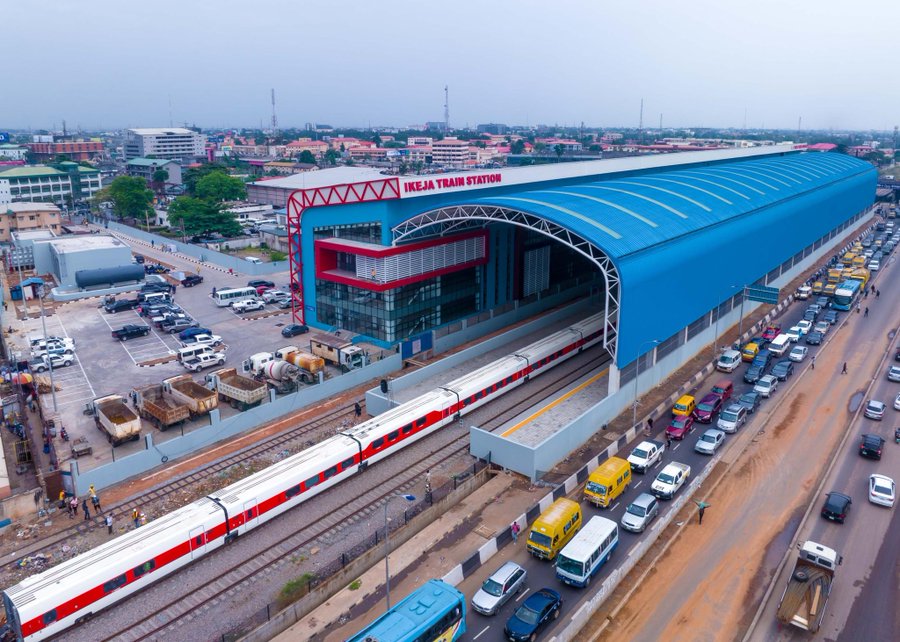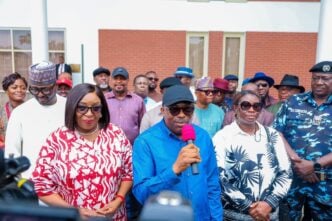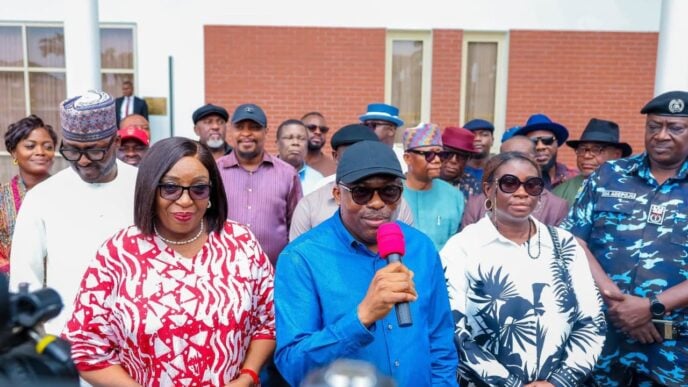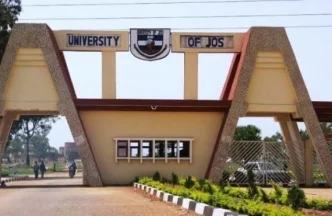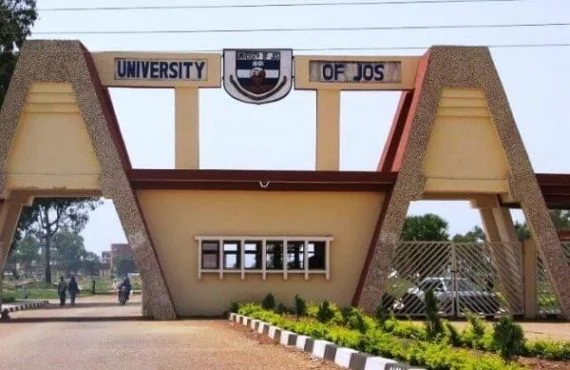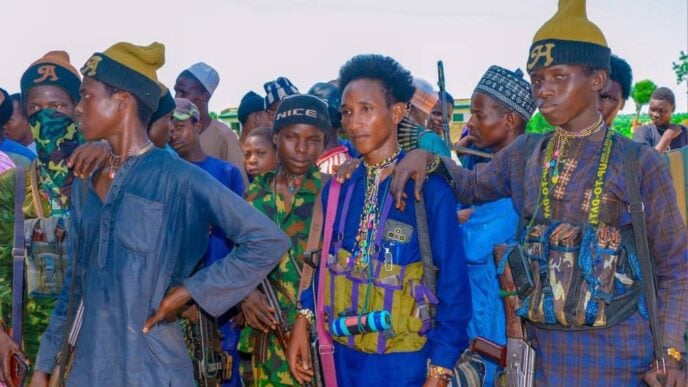BY GBENGA ONABANJO
In 1983, Lagos stood at the threshold of history. A fully conceived Metroline project, complete with feasibility studies, cost forecasts, repayment plans, and right-of-way (ROW) already secured, was ready to launch Nigeria into the modern age of urban mobility.
The contract had been awarded. Construction was set to begin. Lagosians dared to imagine a city where electric trains soared above traffic, gliding silently while the city breathed easier below.
Then came a military coup.
Advertisement
The new regime cancelled the project without consultation or compensation. There was no official explanation, nor dialogue. Just… silence.
We didn’t just lose a transport system. We lost a leapfrogging moment.
Cairo, despite facing its own political turbulence, went ahead with its metro vision. Today, it boasts over 100 kilometres of electric rail. Some of the rail lines are tunnelled through the Nile River. Cairo now exports its rail technology to Africa and the Middle East. The returns on the rail infrastructure have greatly improved the economy of Egypt.
Advertisement
In contrast, Lagos has only managed to deliver two short rail lines as of 2025, one of which still runs on diesel. The projected returns on investment (ROI) have fallen short, largely because the network remains incomplete and the current ridership falls significantly lower than the forecast used in the feasibility studies.
Just imagine where Lagos would be today if the Metroline project had not been cancelled. Think of the Rolling Stock that would have been deployed, the advanced signalling systems installed, the power infrastructure developed and the invaluable technology transfer that would have taken place, not mentioning direct and indirect employment opportunities that would have been created.
What We Once Knew, and Now Ignore
What made the original Metroline exceptional wasn’t just the promise of rail. It was the clarity and transparency of its plan.
Advertisement
The total project cost was $135 million. The repayment timeline was five years, fully recoverable from operating income. Power supply: 32MW of dedicated diesel generators, designed to supplement public electricity.
Contrast that scenario with today: The Blue Line, an important milestone, no doubt, has been plagued by opacity. Cost estimates exceed ₦120 billion (around $1billion), but with no public breakdown nor transparent ROI, and an unclear operating model.
The extension to Okokomaiko is still pending, with no firm completion date.
Meanwhile, the coastal highway, reportedly pegged at over $11 billion, marches forward with even less clarity.
Advertisement
Opening Tracks, Closing Cities
Urban rail should be more than movement; it should ignite urban renewal. In cities like Shanghai, Seoul, and Singapore, metro stations have catalysed development: housing, jobs, commerce, culture.
Advertisement
Transit-Oriented Development (TOD) isn’t a luxury. It’s a necessity.
But in Lagos, our stations stand in isolation. Mile 2 to Marina remains grossly underdeveloped. There is neither zoning reform nor incentives. There is no attempt at creating mid-income housing or mixed-use development around the hubs.
Advertisement
Between National Theatre and Mile 2, what greets commuters is not opportunity, but a corridor of squalor, misery, and filth. This should not be so. Efforts should be geared towards cleaning up this corridor to give commuters on the elevated train a pleasant scenic experience.
Even the Lagos–Ibadan rail line, a federal accomplishment, lacks urban connectivity. The stations are visually impressive, but the surrounding areas remain untouched. There are no public spaces nor reconfigured street networks. No plans whatsoever.
Advertisement
Worse still, the stations don’t seem designed to connect with the communities they supposedly serve. As though the trains were meant to pass through, not to stop for the people.
This Is Not How Cities Should Look
Here lies a painful truth: there’s a growing disconnect between what Lagos is and what a modern city should be.
Our roads are choked.
Our drainages are exposed, blocked, and failing.
Our buildings are walled off like fortresses.
Our sidewalks, if they exist, are battlegrounds for hawkers and survival.
We build cities against people, not for them.
Meanwhile, cities like Dubai, Shanghai, and even Cairo invest in:
- District cooling,
- Centralised sewer systems,
- Citywide transit integration,
- Green corridors and open space.
In Lagos, urbanisation gallops forward, but planning limps behind.
We’re always playing catch-up when we should be thinking far ahead. The numbers are clear: Lagos will double in population by 2050. Is our infrastructure ready? Certainly not!
A robust rail network could ease this pressure. With the right strategy, someone could live in Epe and work in Victoria Island. Others can live in Badagry and work in Lagos. That’s what mass transit enables. That’s what we’re missing. The mass transit can be used to decongest the urban centres. This is what obtains in other climes.
We Need a Culture Shift
We must stop treating infrastructure as isolated events. A rail line is not a win if it doesn’t connect with:
- Urban renewal,
- Climate resilience, and
- Inclusive growth.
A sewer system is not effective if it stops at estate gates. A road is not modern if it lacks pedestrian walks and shade trees.
This calls not just for better construction, but for governance reform:
- Transparency: Publicly disclose project costs, financing structures, and completion timelines.
- Accountability: Involve citizens in oversight and post-construction review.
- Inclusion: Build for everyone, not just the privileged or politically connected.
- Vision: Tear down the walls. Build open squares. Design cities that breathe.
Walled cities are afraid. Open cities thrive.
Time to Leap Again
The Green Line, now in planning, offers Lagos a second chance.
If we build it with:
- Electric propulsion,
- Renewable energy, and
- Mixed-use, loveable stations.
…we could create a blueprint for every Nigerian city.
Let’s not repeat the sins of the past.
Let the stations become hubs, not dead ends. Let’s build an ecosystem around these stations.
Let the line connect with solar roofs, climate-adaptive infrastructure, and community energy.
Let Lagosians participate in the process, not just spectate.
Because the greatest tragedy of the Metroline was not its cancellation; it was our failure to learn from it.
Conclusion
For 40 years, Lagos has been playing catch-up because of one cancelled contract.
The gap between us and progressive cities is widening, not just in tech, but in values.
But this story can still change.
Lagos can lead, not just in population or traffic, but in urban intelligence, transport sustainability, and inclusive development.
All it takes is transparency, courage, openness and vision.
Let us leap again.
Onabanjo, an architect, environmentalist and urban policy advocate, is the founder of GO-FORTE FOUNDATION, an NGO for the restoration of the environment.
Views expressed by contributors are strictly personal and not of TheCable.
